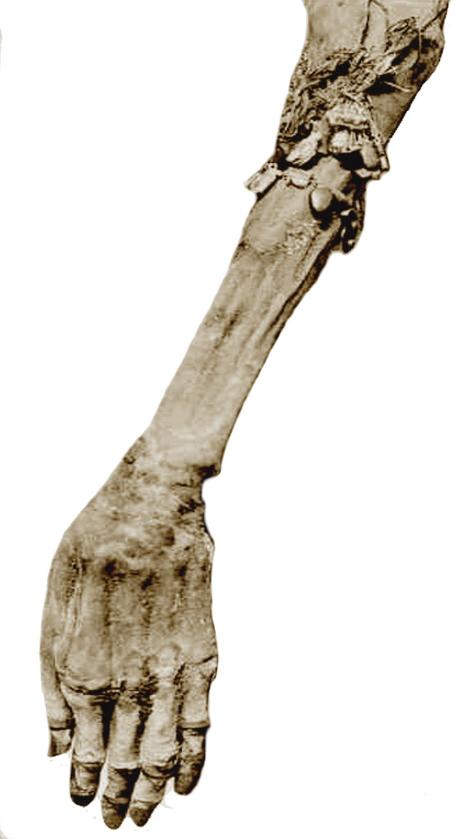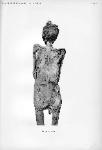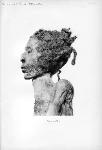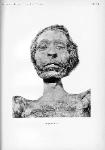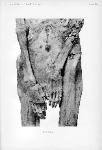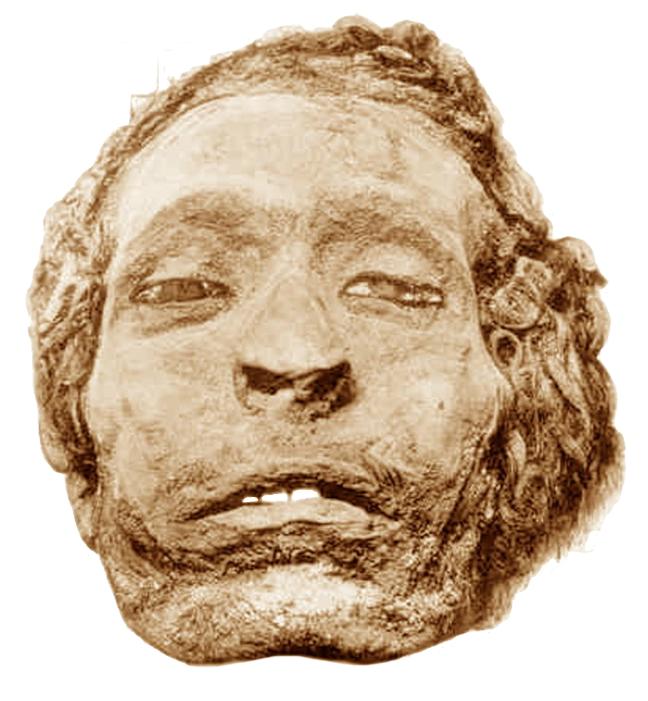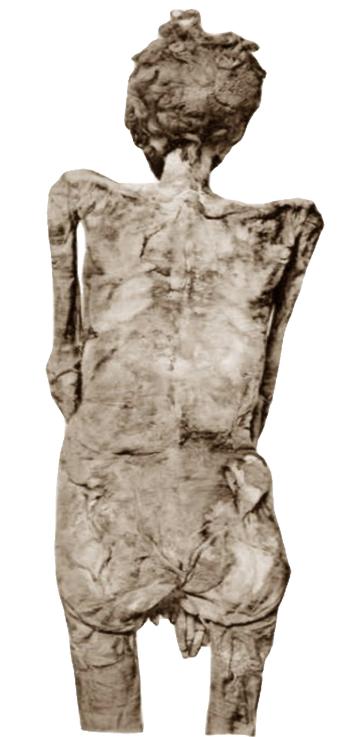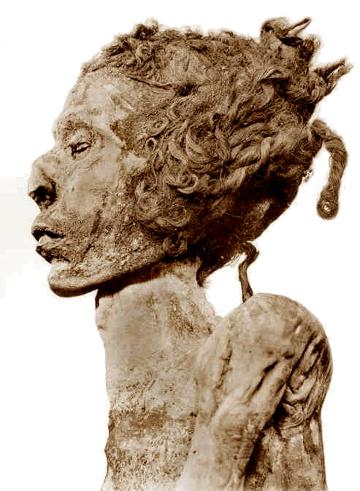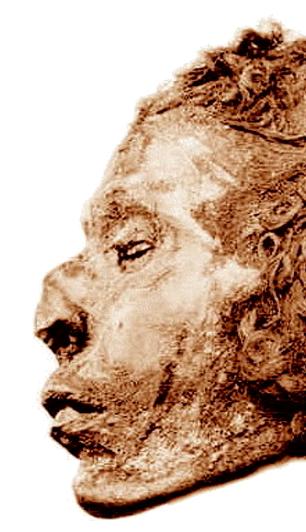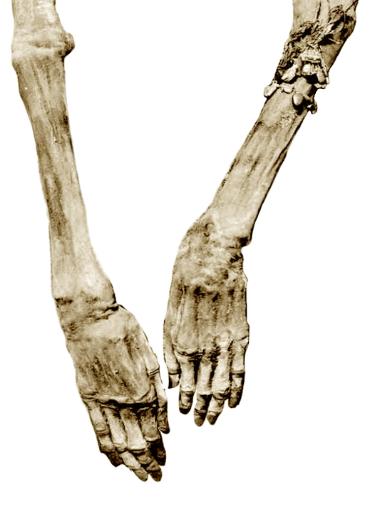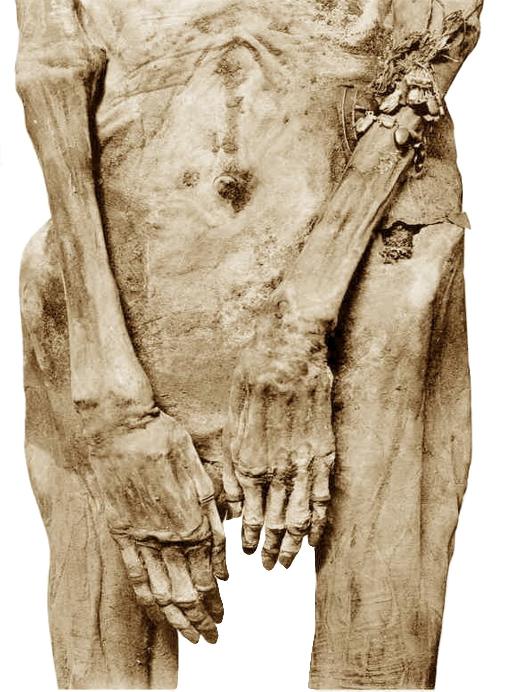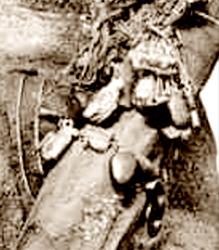Previous page Index Next page
| Russian Academy of Sciences Centre for Egyptological Studies, Moscow (CESRAS) & Russian Institute of Egyptology in Cairo (RIEC) G. Elliot Smith, The Royal Mummies, Catalogue Général du Musée du Caire, Nos 61051-61100, Cairo 1912 Mummy of Djedptahjuefankh, 3rd Prophet of Amun in Thebes Site Directory Personages Artifacts Iconography SMITH'S-INDEX Deities Royal Cache TT320 Network Index |
"Thumbnail" unedited scans of Smith's original plates.
(pathology of mummy) Click on image for full-sized view.
(pathology of mummy) Click on image for full-sized view.
Djedptahjuefankh: 3rd Prophet of Amun, Thebes, 21st (21a?) - 22nd Dynasty:
remains of burial in usurped 21a Dynasty coffins found in the "Royal Cache" TT320
(DB320) dated Year 11 (934 BCE) of king Sheschonq I, founder of the 22nd Tanite
Dynasty. The location of the original burial is not known, but it was most certainly
not TT320. In contrast to the use of usurped coffins, his mummy is said to be the
highest quality of mummification known. Click here for coffins and burial goods
Click here for Daressey's texts, Click here for Maspero's description (bottom of
page).
remains of burial in usurped 21a Dynasty coffins found in the "Royal Cache" TT320
(DB320) dated Year 11 (934 BCE) of king Sheschonq I, founder of the 22nd Tanite
Dynasty. The location of the original burial is not known, but it was most certainly
not TT320. In contrast to the use of usurped coffins, his mummy is said to be the
highest quality of mummification known. Click here for coffins and burial goods
Click here for Daressey's texts, Click here for Maspero's description (bottom of
page).
Hm-nTr III n jmnw DdptaHjwfanx, Cairo CG61097
| Scroll down |
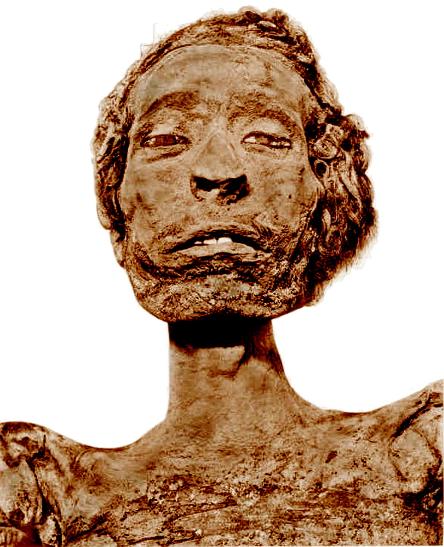
Left arm showing amulets
Processed images are the
intellectual property of the Russian
Academy of Sciences, Moscow R.F.
intellectual property of the Russian
Academy of Sciences, Moscow R.F.
The nose, conventionally
broken through as a passage
for the removal of the brain
tissue by the embalmers' use of
special hooks for this purpose,
appears to have been flattened
by the tight application of the
mummy wrappings.
broken through as a passage
for the removal of the brain
tissue by the embalmers' use of
special hooks for this purpose,
appears to have been flattened
by the tight application of the
mummy wrappings.
